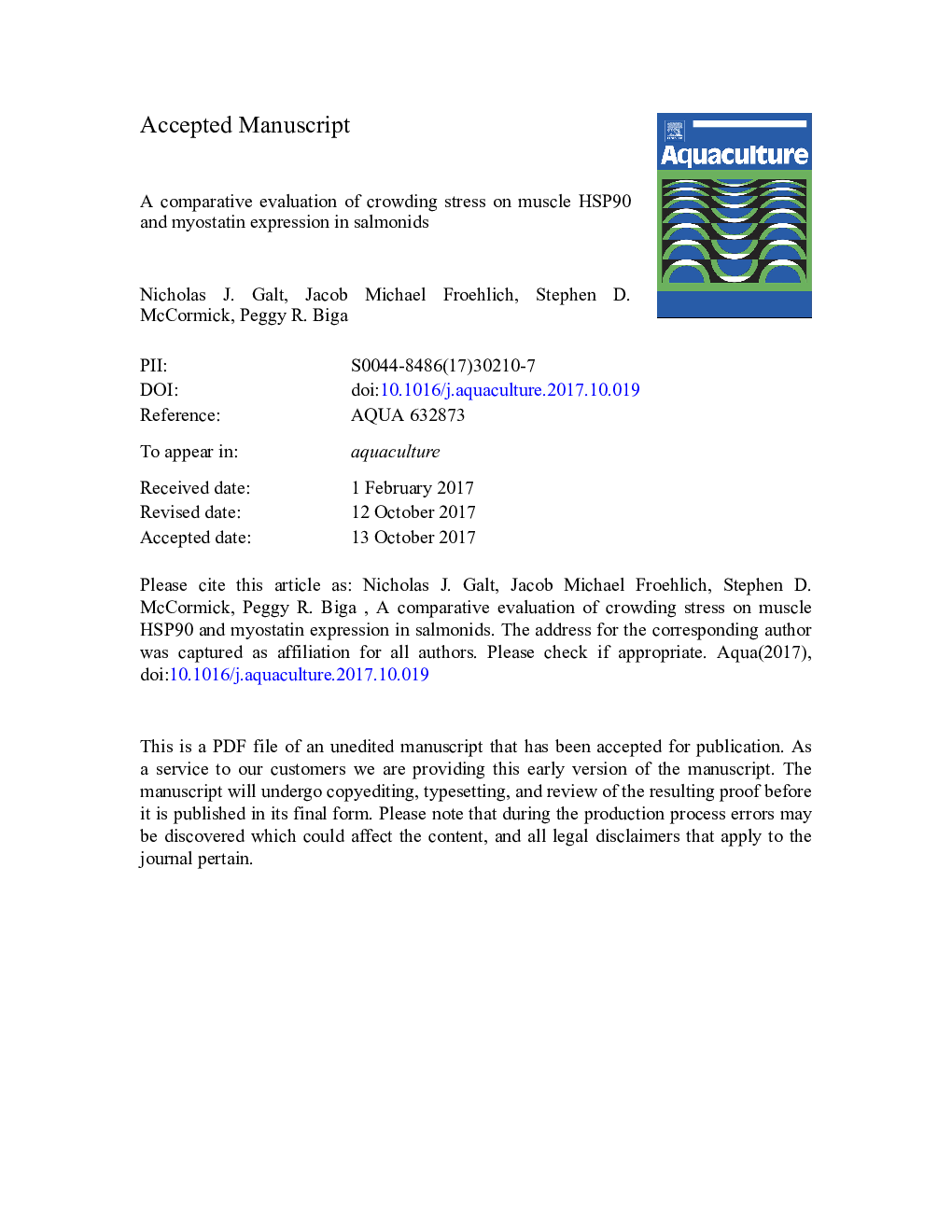| Article ID | Journal | Published Year | Pages | File Type |
|---|---|---|---|---|
| 8493612 | Aquaculture | 2018 | 28 Pages |
Abstract
Stress is a major factor that contributes to poor production and animal welfare concerns in aquaculture. As such, a thorough understanding of mechanisms involved in the stress response is imperative to developing strategies to mitigate the negative side effects of stressors, including the impact of high stocking densities on growth. The purpose of this study was to determine how the muscle growth inhibitor, myostatin, and the stress-responsive gene HSP90 are regulated in response to crowding stress in rainbow trout (Oncorhynchus mykiss), cutthroat trout (Oncorhynchus clarki), brook trout (Salvelinus fontinalis), and Atlantic salmon (Salmo salar). All species exhibited higher cortisol and glucose levels following the handling stress, indicating physiological response to the treatment. Additionally, all species, except rainbow trout, exhibited higher HSP90 levels in muscle after a 48Â h crowding stress. Crowding stress resulted in a decrease of myostatin-1a in brook trout white muscle but not red muscle, while, myostatin-1a and -2a levels increased in white muscle and myostatin-1b levels increased in red muscle in Atlantic salmon. In rainbow trout, no significant changes were detected in either muscle type, but myostatin-1a was upregulated in both white and red skeletal muscle in the closely related cutthroat trout. The variation in response to crowding suggests a complex and species-specific interaction between stress and the muscle gene regulation in these salmonids. Only Atlantic salmon and cutthroat trout exhibited increased muscle myostatin transcription, and also exhibited the largest increase in circulating glucose in response to crowding. These results suggest that species-specific farming practices should be carefully examined in order to optimize low stress culture conditions.
Keywords
Related Topics
Life Sciences
Agricultural and Biological Sciences
Aquatic Science
Authors
Nicholas J. Galt, Jacob Michael Froehlich, Stephen D. McCormick, Peggy R. Biga,
